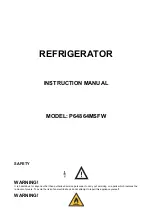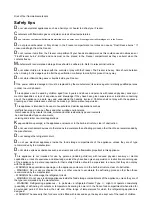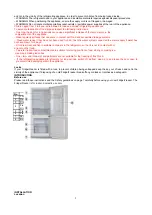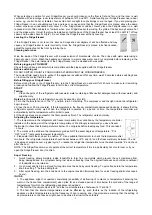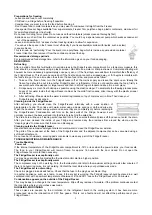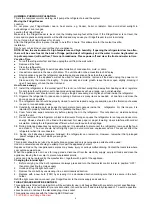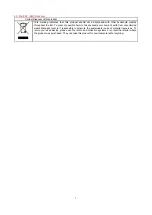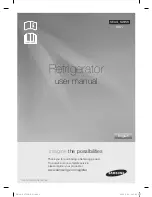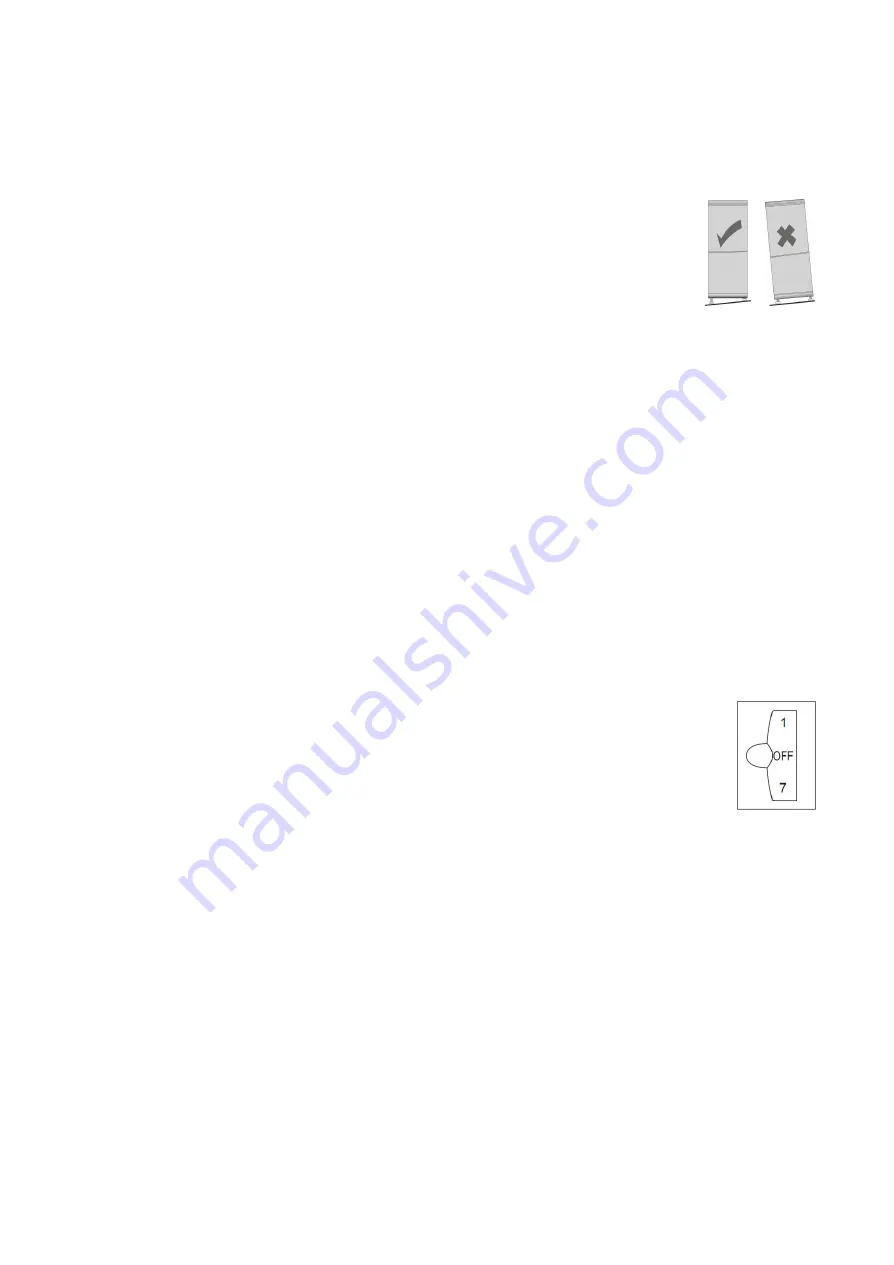
When selecting a position for your Fridge/Freezer you should make sure the floor is flat and firm, and the room is well
ventilated with an average room temperature of between 16
℃
and 38
℃
. Avoid locating your Fridge/Freezer near a heat
source, eg, cooker, boiler or radiator. Also avoid direct sunlight in out-buildings or sun lounges. If you are placing your
Fridge/Freezer in an out-building such as a garage or annex ensure that the Fridge/Freezer is placed above the damp
course, otherwise condensation will occur on the Fridge/Freezer cabinet. Never place the Fridge/Freezer in a wall
recessed or into fitted cabinets or fumiture when your Fridge/Freezer is working, the grille at the back may become hot
and the sides warm. It must therefore be installed so that the back of the Fridge/Freezer has at least 10 cm(31/2”) of free
space and the sides have 2cm(3/4”). Do not drape the Fridge/Freezer with any covering.
Leveling the Fridge/Freezer
If the Fridge/Freezer is not level, the door and magnetic seal alignment will be affected and may
cause you Fridge/Freezer to work incorrectly. Once the Fridge/Freezer is placed in its final location,
adjust the leveling feet at the front by turning them.
Cleaning before use
Wipe the inside of the Fridge/Freezer with a weak solution of bicarbonate of soda. Then rinse with warm water using a
damp sponge or cloth. Wash the baskets and shelves in warm soapy water and dry completely before replacing in the
Fridge/Freezer. The external parts of the Fridge/Freezer can be cleaned with wax polish.
Before plugging in YOU MUST
Check that you have a socket which is compatible with the plug supplied with the Fridge/Freezer.
Before switching on!
DO NOT SWITCH ON UNTIL FOUR HOURS AFTER MOVING THE FRIDGE/FREEZER.
The coolant fluid needs time to settle. If the appliance is switched off at any time, wait 30 minutes before switching back
on to allow the coolant fluid to settle.
Before filling your Fridge/Freezer
Before storing foods in your Fridge/Freezer, turn the Fridge/Freezer on and wait for 24 hours, to make sure it is working
properly and to allow the Fridge/Freezer to fail to the correct temperature.
START
Testing
1.
Clean the parts of the refrigerator with lukewarm water containing a little neutral detergent and with clear water, and
wipe them dry.
Notes:
Electric parts of the refrigerator can only be wiped by dry cloth.
2.Turn the thermostat knob to the "3" position, turn on electricity. The compressor and the light inside the refrigerator
begin to work.
3.Close the door 30 minutes later, if the temperature in the freezer compartment decreased obviously, it shows that the
refrigerator system works well. When the refrigerator operates for a period of time, the temperature controller will
automatically set the temperature within limits it opens.
4.If the above steps are successful, the trial operations finish. The refrigerator works normally.
Adjusting the temperature
1. The temperature in the refrigerator and freezer compartment is controlled by the temperature controller
installed on the inside wall of the refrigerator compartment. We strongly recommend you use a freezer
thermostat to check that the temperature is below -18 centigrade before loading any food. This can take 2
- 3 hours.
2. The marks on the knob are the temperature grades, NOT the exact degrees of temperature. “0” is
“OFF” and “7” represents the lowest temperature.
3. Please start with the knob set to position “4”. Use a suitable thermometer to check the temperature after
two hours. The refrigerator temperature should be set b2ºC and +5º and the freezer will vary between -18 and
-25 degrees centigrade over a typical cycle. To reduce the refrigerator temperature turns the knob towards “6” and check
after one hour.
NOTE: The Fridge/Freezer may not operate at the correct temperature if it is in a particularly hot or cold room or if you
open the Fridge/Freezer door too often.
Super Freezing
1.
Quick freezing allows moisture inside foodstuffs to form fine ice-crystals which prevent the cell membrane from
being damaged and the cytoplasm being lost when unfreezing, thus the original freshness and nutrition constituent
of foodstuffs can be retained.
2.
Fresh meal and fish to be stored for long time must be done by quick freezing. To quick freeze turn the temperature
knob to setting “7” before adding food.
3.
After quick freezing, turn the knob back to the original position (Normally time for quick freezing shall not exceed 4
hours).
IN USE
1. The appliance might not operate consistently (possibility of defrosting of contents or temperature becoming too
warm in the frozen food compartment) when sited for an extended period of time below the cold end of the range of
temperatures for which the refrigerating appliance is designed
2. The fact that the climate class is ST, and the room temperature of between 16
℃
and 38
℃
.
3. The fact that the internal temperatures could be affected by such factors as the location of the refrigerating
appliance, ambient temperature and the frequency of door opening, and, if appropriate, a warning that the setting of
any temperature control device might have to be varied to allow for these factors
3

